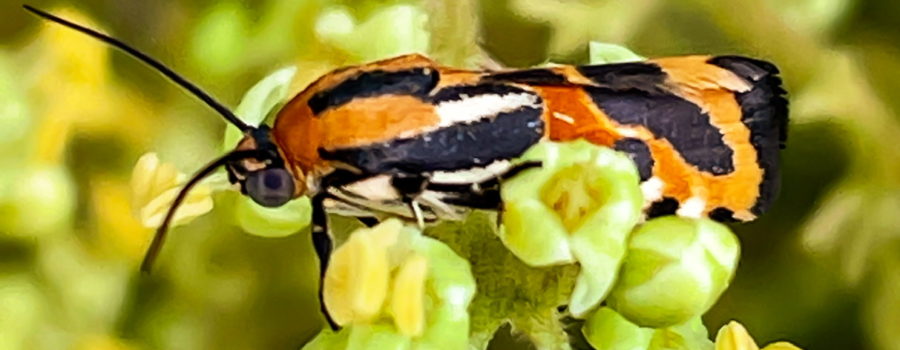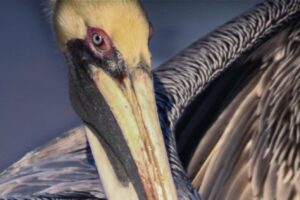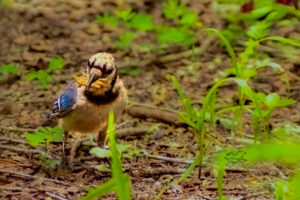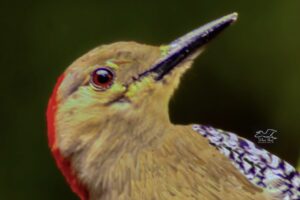I Think That This is the Most Beautiful Moth I’ve Ever Seen!

Last week I was collecting my mail, and decided to get some photos of the winged sumac bush that grows along the fence line. It grows right next to the summer grape, but it flowers a little bit later, so between the two we get plenty of color in the mid to late summer. I have admired those showy clusters of green and white flowers for plenty of years, but for some reason I had never photographed them. When I went over to the bush all I could hear was buzzing. The plant was alive with pollinators! In a very short time I found honey bees, paper wasps, organ pipe wasps, metricus paper wasps, two types of robber fly, thread waisted wasps, and in the midst of all that, this tiny little moth. The moth wasn’t easy to see at first because it was buried deep in a cluster of flowers, but it was actively feeding, so I just waited for it to work it’s way out where it was easier to see. Buried in the flowers I could tell it was a beautiful moth, but when it came out, I was blown away!

I had never seen this moth before, so it was off to the PictureInsect app for identification and then some online research. It turns out that it is a black dotted spragueia moth, which is a type of bird dropping moth. Poor little thing, to be labeled with that name forever! But I do have to say I can see the resemblance. Actually, this moth doesn’t look as much like bird droppings as some of the others in that group. Nature has some unusual ways of providing animals with camouflage from predators! If you go a bit further up the taxonomic tree, you can call this little moth an owlet moth (same group as the fir tussock moth), which is a much less unpleasant classification! Once I made the identification, I was even more pleased with my sighting, because this moth has a fairly limited range that includes most of Florida, and coastal regions of Georgia, Alabama, and the Carolinas. It does have a cousin, the common spragueia moth, that looks very similar, but is more blotchy than the stripey black dotted spragueia. The common spragueia has a wider range that runs as far north as the Great Lakes and as far west as the Mississippi River.

As I’m sure you have already figured out, the black dotted spragueia feeds on nectar and also on fruits. It will feed on a fairly wide variety of flowering plants, so it wasn’t too surprising to find it on the winged sumac. The caterpillars feed mainly on plant leaves, and can sometimes cause damage to crops, especially corn, and gardens. These little moths prefer a habitat of either coastal grasses, or pine flatwoods. Adults are usually seen flying in the mid to late summer. Unlike many other types of moths, they are diurnal, meaning that they are active and feeding during daylight hours, which makes sense when you realize that quite a few flower species close or partially close at night. As I stated, earlier, I was really pleased with this find, not only because of it’s limited range, but also because of it’s great beauty (even if it is a bird dropping moth)! What do you think about the markings on this little one? Beautiful or bird poop?

If you enjoy beautiful nature photography and artwork please subscribe to our blog and newsletter!





Recent Comments